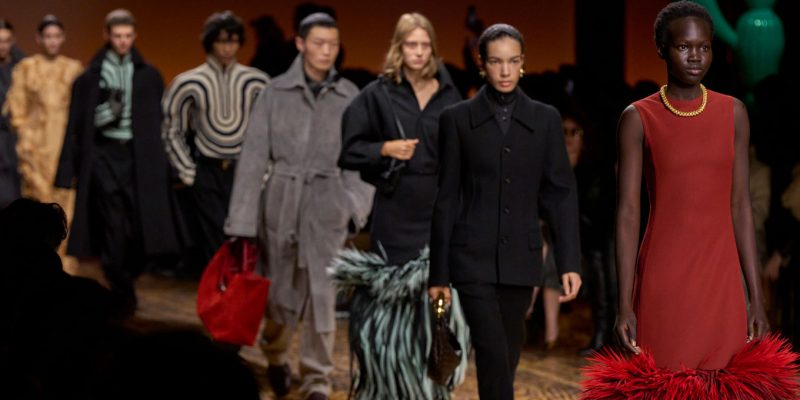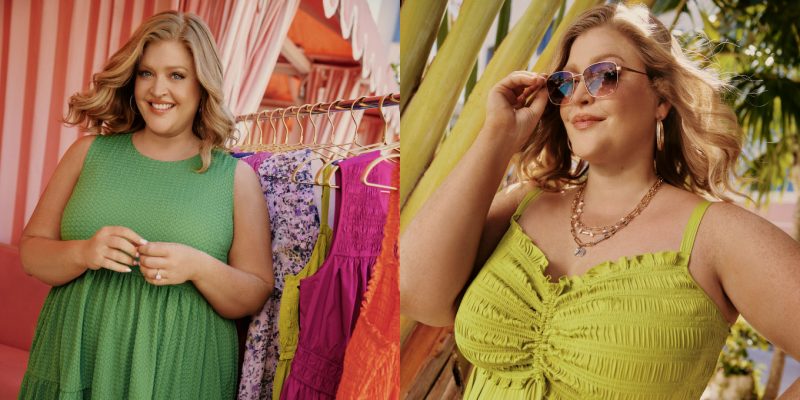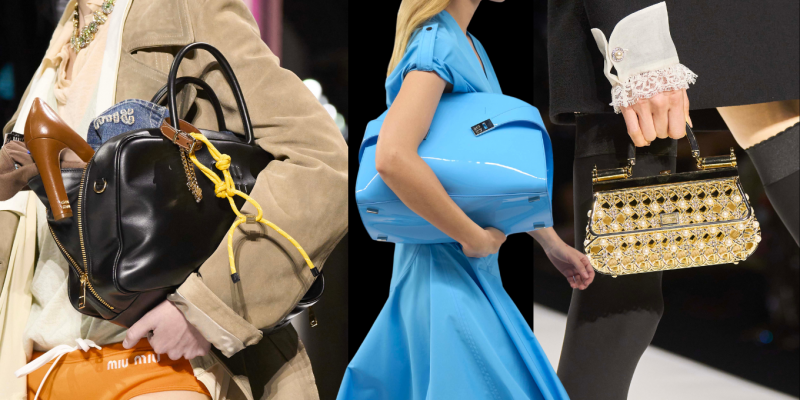Fashion Weeks
Iris van Herpen Is The Fashion Industry's ‘It’ Designer
The designer presented her haute couture fall/winter 2022/2023 collection in Paris this past summer in celebration of the fashion house’s 15th anniversary.
by : Estelle Gervais- Oct 12th, 2022
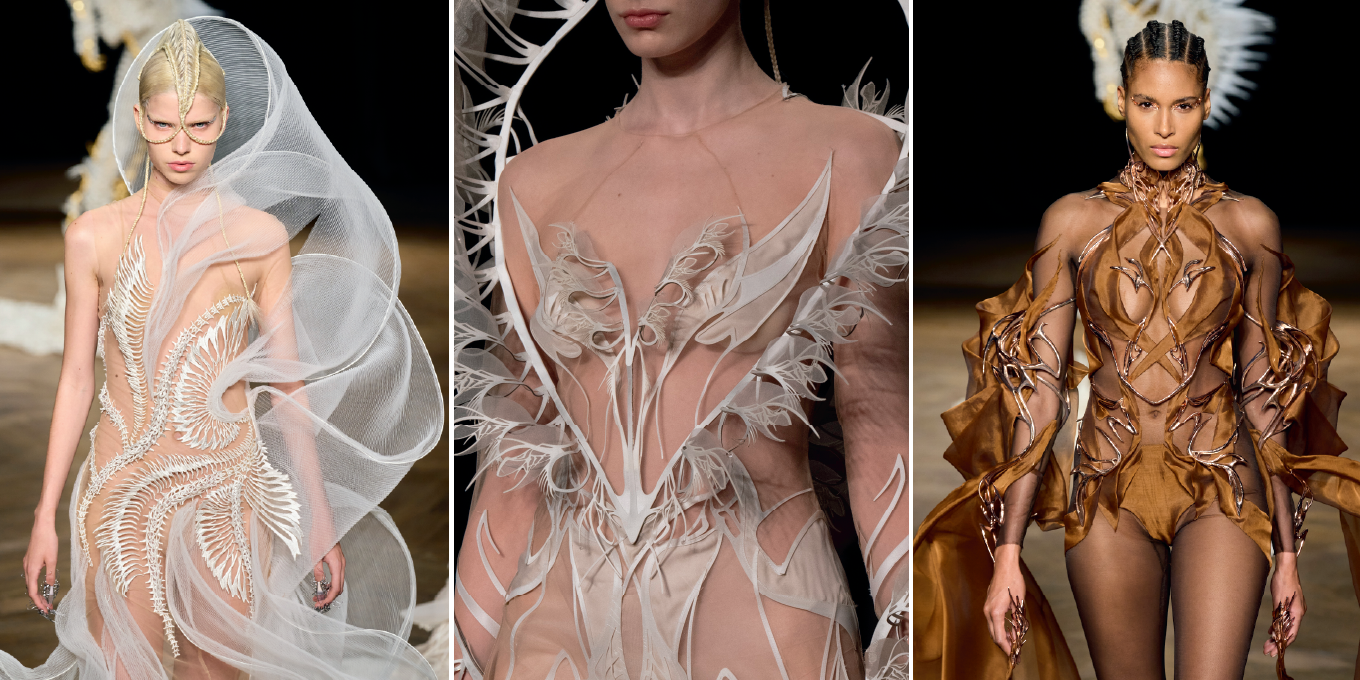
PHOTOGRAPHY, IMAXTREE (RUNWAY)
Multidisciplinary technologies are at the core of haute couture powerhouse Iris van Herpen’s creations, in which vision and artisanal craftsmanship collide. One of the most avant-garde designers of our time, van Herpen has been pushing her sustainable wearable art forward for the past 15 years. Her repeat clients include Lady Gaga, Björk and Beyoncé, all of whom have worn her custom-made dresses on the world’s biggest red carpets. We had the chance to speak with van Herpen in Paris after her anniversary show, “Meta Morphism,” this past July.
Why is this show so important, and what inspired you?
“I really wanted to express everything the brand has been doing so far without looking backwards, because my work has always been about innovation and the future combined with craftsmanship. The starting point for this collection was posthumanism, a future where our digital reality and our physical reality are indistinguishable. There’s also the timeless question of ‘Who are we beyond our physical bodies?’ I think that’s a very beautiful question that we might never be able to answer.”
All your collections are based around technology, but the craft of haute couture is historically quite rigid. How do you navigate those parameters while incorporating innovation?
“I think it’s in my nature. Craftsmanship—the knowledge of the haute couture techniques—is the backbone of the atelier, and I need to innovate to make it feel relevant today. My focus within the collection is always to transform the body and create a reality in the movement with the garment. If I were to focus purely on traditional craftsmanship, I would not be able to achieve the fashion-forward materiality of the looks. The transformation is only possible if I fuse the two.”
You constantly develop materials to achieve specific movement, shapes and textures. Are there any new ones in this collection?
“Yes, we’ve done some really beautiful collaborations this time. We’ve done a lot of 3-D printing in the past [to create materials], but this is the first time we were able to innovate in terms of [creating] sustainable materials. One that I really like is [made from] the banana leaf; it’s a very beautiful silklike shiny light material that still has a stiffness as it is organic, and it has a draping that I have never done before. We collaborated with Dutch duo Eric Klarenbeek and Maartje Dros on printable filaments made out of cacao beans, which was really challenging. We also worked with [printing company] Materialise, using an upcycled powder leftover from 3-D prints, and with [copper company] Solaris on an upcycled organza.”
 PHOTOGRAPHY, IMAXTREE (RUNWAY)
PHOTOGRAPHY, IMAXTREE (RUNWAY)It’s nice to see such sustainability, but it makes sense considering you’re constantly pursuing innovation.
“That’s where I see the value of couture, as it has always been an inspiration for ready-to-wear and an experimental laboratory. We can innovate new sustainable materials that can then go into mass production. I think it’s a very beautiful dialogue between the two [aspects of design]and they elevate one another.”
Most of your pieces are one-offs for private clients. Can you walk me through the process of making a couture garment?
“Most of our clients come to see the show, and then they come to the showroom to look at the collection up close. Either I’ll start drawing a custom piece or they’ll [choose] a look from the collection and we’ll adapt it to their measurements. They then often come to Amsterdam to do an in-between fitting, and we adjust accordingly. This is a three- to four-month process. Finally, there is a final fitting when the piece is done or we send it to them directly.”
I’ve read that you produce only about 100 custom pieces per year.
“I think it’s less than that, actually, because we are only about 30 people in the atelier and there are often seven or eight people working on a single order. When we start a piece, we have to translate the pattern work into the computer so the laser-cutting can be done by the 3-D printer, and that alone can take three to four weeks. It then goes to a classic tailor to translate into normal pattern work, and only then can the laser-cutting of the fabric start. We also have to educate the people in the atelier so they understand both the traditional and the technological sides of things, because you don’t learn this at the academy or at another house. This is also why we are quite limited in the amount of orders we take, because it requires the right people to keep the vision going. I also think that’s the reason clients can recognize an IVH [piece]—it combines the past and the future to create a look that you cannot find elsewhere. I think that’s why we have regular clients who keep coming back to us.”
Are there any lessons you’ve learned over the past 15 years?
“I think the biggest challenge [has been finding a] balance between identity and commerce. I feel I’ve been very consistent in my choices, and that’s why I now have complete freedom in terms of creativity, which is really valuable. I don’t have investors telling me ‘You have to do this’ or ‘You have to make that product.’ That’s what I’ve been fighting for for so long. It is the biggest luxury for me to have that freedom as an artist. If you build a brand, there are many people who try to influence you, give you advice, steer you into something. I feel I’ve been able to listen to the right people and be stubborn and therefore protect who I am.”
Newsletter
Join our mailing list for the latest and biggest in fashion trends, beauty, culture and celebrity.
Read Next

Beauty
The Best Met Gala Beauty Looks Of All Time
From Taylor Swift's 'Bleachella' era to Rihanna's iconic 2011 braids, meet the best beauty moments in Met Gala history.
by : Katie Withington- Apr 26th, 2024

Culture
Benny Blanco Says He Fell in Love With Selena Gomez Without ‘Even Noticing’ It
Allow Benny Blanco to tell the straight-from-a-rom-com story of how he realized his feelings for his girlfriend and longtime friend.
by : Alyssa Bailey- Apr 26th, 2024
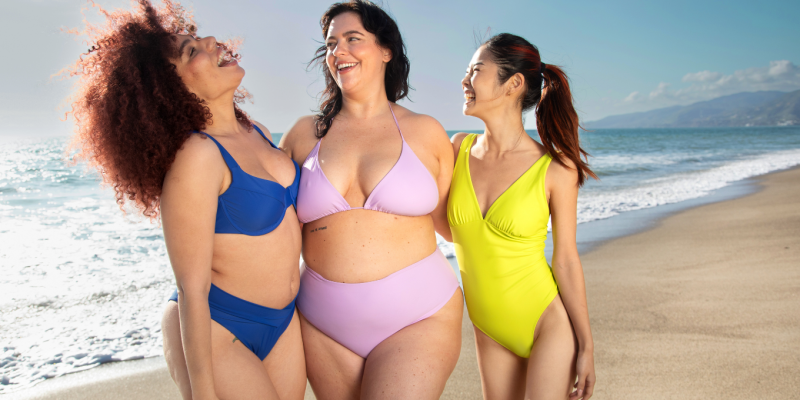
Beauty
Summer Prep: How to Feel Confident in Your Swimsuit
New Size-Inclusive Swimwear: Gillette Venus partners with The Saltwater Collective to Launch a Collection for Any Body
by : ELLE Canada- Apr 24th, 2024


